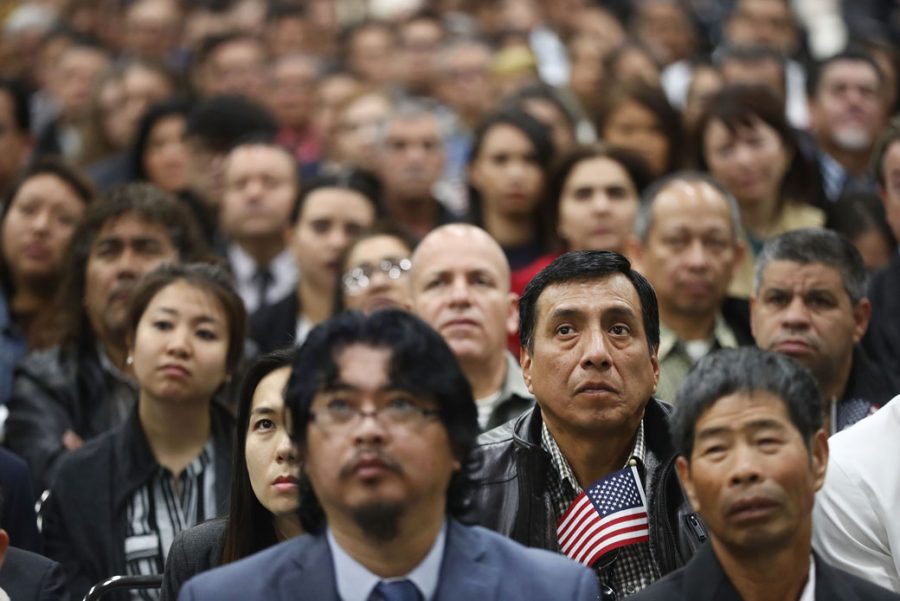The Reality of Moving to the Melting Pot
How does immigration affect the lives of individuals? As of 2015, the US has accepted about 47 million immigrants from foreign countries, contributing to about 14.4% of the United States’ population. Individuals come to this country for a variety of reasons, making significant sacrifices in the process. Whether it is something common, like hoping to find better opportunities for oneself, or something as extreme, as fleeing government-induced turmoil, migrating from completely different atmospheres can affect individuals in damaging ways. Immigrants come face-to-face with adversity as they are forced to assimilate to American society in hopes of having a more sustainable life.
Many times in history, migration was often associated with things like fleeing famines, rising taxes, crop failures, and shortages for land and labor. While these issues are still relatively prevalent today, reasons for migration have become simpler. Many people coming here are plainly searching for a change in scenery or are moving to be near their families. The grandparents of students at Shaker High school, Rahm Arif and Najma Arif, immigrated from Pakistan almost 30 years ago. They explained their struggles and how they got to where they are now. “It was truly a difficult time in my life, but I’m glad that I’m where I’m at right now. It’s not easy coming to this scary place,” says Rahm Arif.
One of the most important obstacles immigrants are struck with are finances.
“When we first came here, my wife and I moved in with my daughter and our 3 grandchildren. We had about 5 people living in a two bedroom apartment. Our air conditioning broke many times and there were frequent problems with the stove and refrigerator,” said Mr. Arif. Oftentimes, even when coming from moderate living standards in one country, immigrants are placed in low- income areas where they are faced with limited space, lower quality appliances and overall less comfort in their living conditions. “I think one very big challenge I faced was the difference in currency,” says Najma Arif. “In Pakistan for 100 rupees (1.35 US dollars), you could probably get a pound of rice or a loaf of bread, while in America you can maybe only get a pack of gum for the equivalent in US dollars.” The world contains a variety of economies specific to the nations they provide for. This means the cost of living in one country can be totally unlike the cost of living compared to another country, causing a great economic divide between newly migrated people in America to those already living here. If you have the ability to move from a third world country like Pakistan, you are most likely well off enough to have a comfortable life in that country. But those people are frequently subject to poverty in America which is a more advanced, costly country.
Another hurdle many immigrants experience when coming to this country is the stark contrast in language. “We were taught British English in our public schools in Pakistan so we had no problem understanding the language when we came here. But I still felt like people still couldn’t understand me, which was frustrating. I have a very sharp accent to this day so when I go to doctor’s appointments or pharmacies, the workers usually speak directly with my granddaughter even though I know how to speak English,” says Mrs. Arif. English is taught everywhere, and it’s something that everyone resorts to. But the language itself is not always the issue. In other countries, people don’t just have a contrasted pronunciation of things, but also a totally different way of speaking. There are certain formal words used for elders, teachers, or even strangers and there are certain informal words we use when speaking to someone often younger than us in many languages around the world. Also, if you directly translate phrases from other languages to English, you notice the order of words is unusual to the way we would say it in America. For example, in Urdu, the English phrase “What is your name?” is really “Your name is what?” if you were to translate word for word. English is not an easy language to grasp, so immigrants face many struggles with this large language barrier that they are forced to maneuver around.
Second generation immigrants are more accustomed to American life and therefore have the facilities to aid new people coming to this country from one with a very disparate culture and language. There are communities where new immigrants are provided with help on learning English, getting more educated, and becoming accustomed to the capital in America. They will also help those having difficulty adjusting feel more supported in this country with people of all backgrounds. Furthermore, immigrants from other countries can form bonds and relationships and strengthen this melting pot as a whole. “It was nice to have Pakistani neighbors a few doors down. They checked up on us and cooked us food, but honestly, everyone of our neighbors offered to help us in any way. I really appreciated their kindness,” says Mrs. Arif.
What we don’t usually think about is how we got here. Countries are built from the process of immigration. The substance of a certain population can dramatically change with the number of immigrants entering that population. These people introduce new cultures to the melting pot that is America. But most of them experience a number of hardships first hand due to the great disparity they face when entering this country. We need to be delegating with our fellow community members about ways to provide for these people who haven’t had a very good start in this new place.


